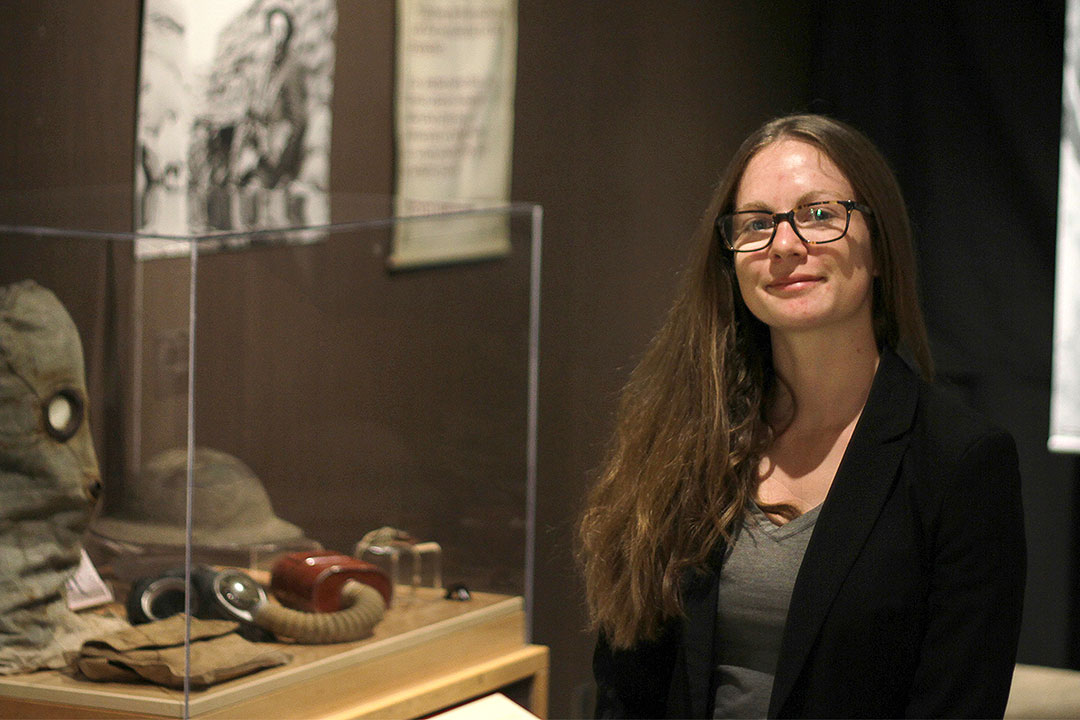
The Great War: Profoundly altering the U of S
Like many communities across Canada, the University of Saskatchewan’s campus community was devastated by the loss of students, staff and faculty during The Great War, with 350 serving and 69 losing their lives in combat.
By Chris MorinFought in trenches far from the Prairies, the ripples of the First World War, which broke out in Europe on July 28, 1914, suddenly became an everyday part of student life. These events would also prove to irrevocably alter the course of the university.
The impact of these events can be seen in the new exhibit Deo et Patriae - For God and Country: The University of Saskatchewan and The Great War, part of the Diefenbaker Canada Centre’s efforts to commemorate The Great War. The exhibit officially opened on April 9, the 100th anniversary of the Battle of Vimy Ridge.
While U of S students, staff and faculty fought in the ground forces, there were those who expected that technological advancements would turn the tide of the war. These priorities were emphasized in the classroom, something that shifted the identity of the U of S and left a legacy that we still see 100 years later, according to Kendra Schreiner, senior docent and special projects assistant with the Diefenbaker Centre.
“There was a marked shift in focus (at the university) from arts to science and research, with an emphasis on agriculture,” said Schreiner. “And we can see that importance continuing today.”
Throughout the exhibit are scenes of a time when the university became a recruiting ground, when it was not unusual to see students in the Bowl training in preparation to fight alongside allied forces.
“We also saw the role of women change during this time,” said Schreiner. “With so many of the men leaving campus to fight in the war, the university saw more women step up to fill those vacated roles.”
There were other traditions that were started during The Great War. In order to keep a sense of normalcy going during the war, Schreiner said university staff started Frosh Week, a more extreme version of the Welcome Week that we have now.
Drawing from university archives and collections, the exhibit tells a more localized version of the story of our role in The Great War, with photos and artifacts that highlight the contribution of those on campus and those who fought overseas. In addition to the 69 lives lost, nearly 100 soldiers from the U of S were wounded and 35 were awarded medals of valour, with the College of Engineering closing for the 1916-17 academic year after so many faculty members and students enlisted.
For Schreiner, the exhibit offers a perspective that’s far removed from the university experience of today.
“The war was something that was very close to the university in that the students who attended at that time were in many ways expected to go overseas and fight—something we wouldn’t be expected to do anymore,” she said.
And while the exhibit paints a poignant picture of an era and experience from a century ago, the legacy should not be lost on those on campus today, said Schreiner.
Names of those who served, and those who were lost, are forever remembered, cast in stone memorials that can be found across campus, such as those inscribed on the walls of the Peter MacKinnon Building.
Deo et Patriae - For God and Country: The University of Saskatchewan and The Great War is on display until December 15.

